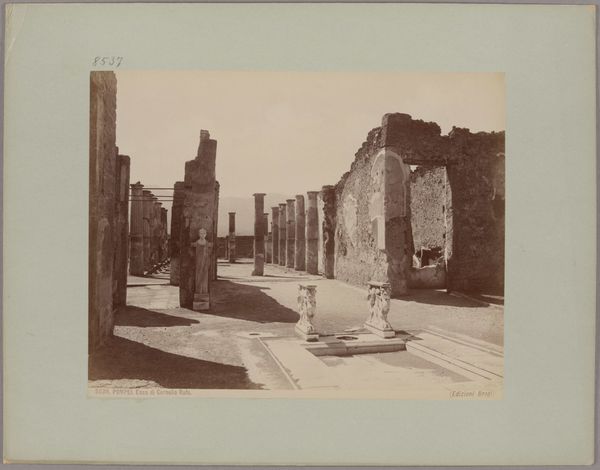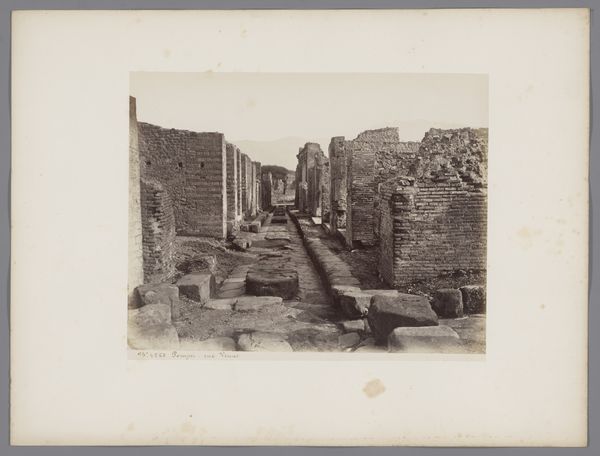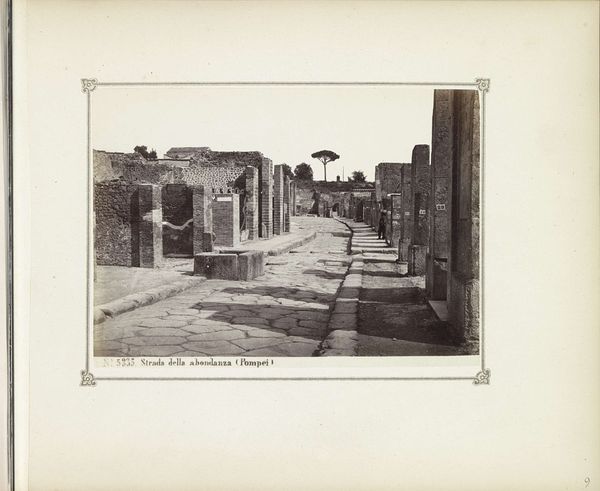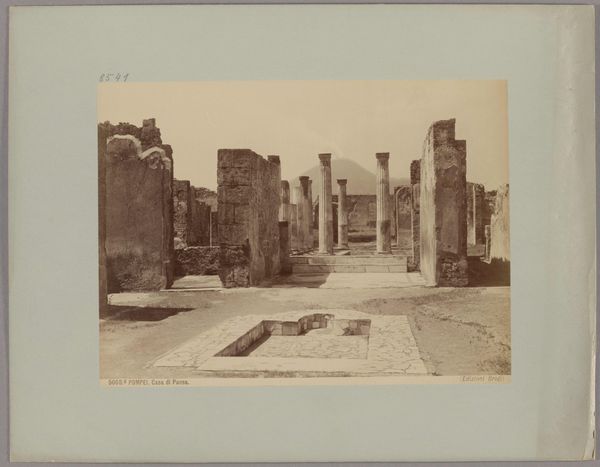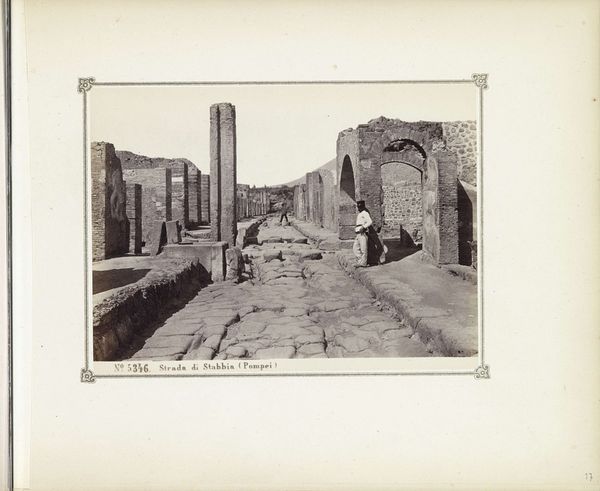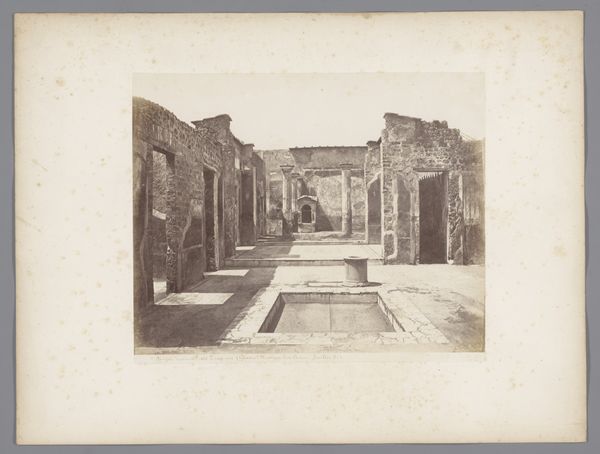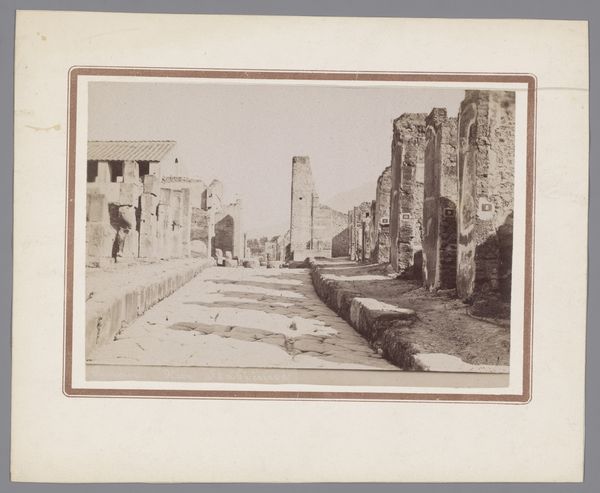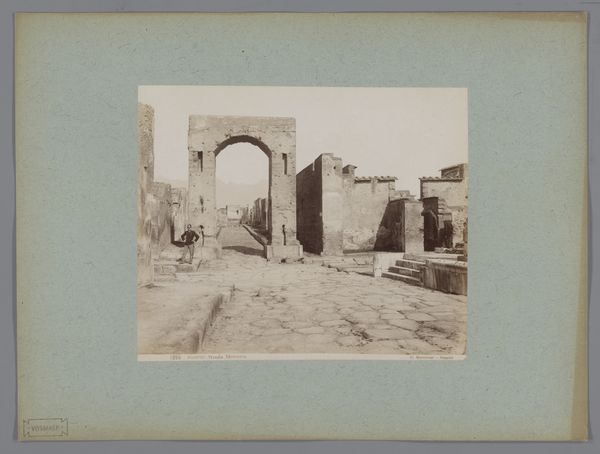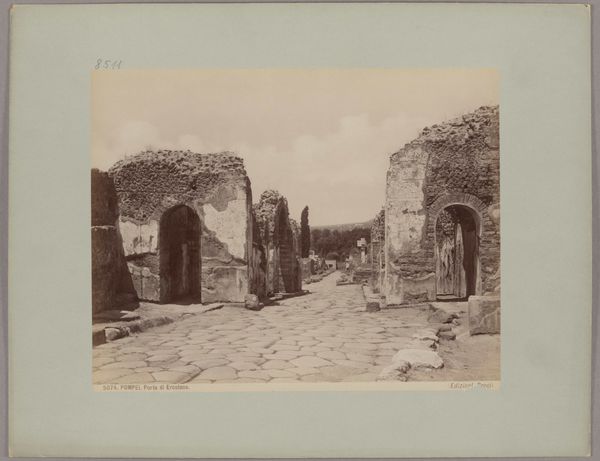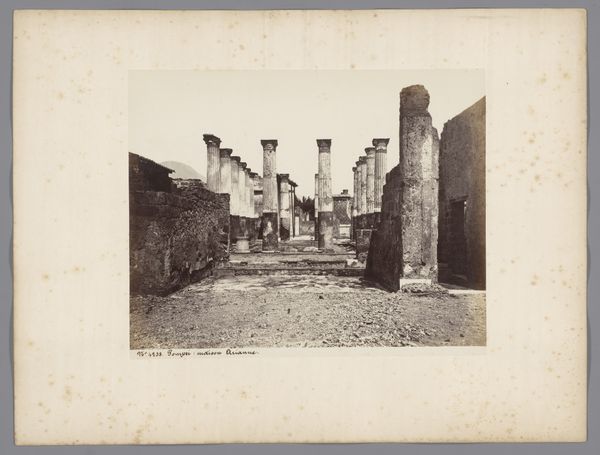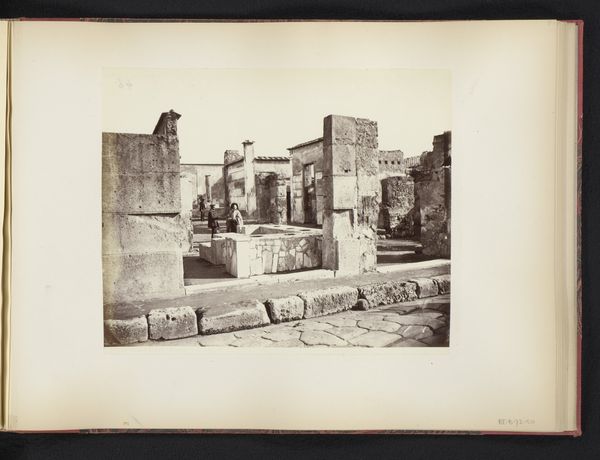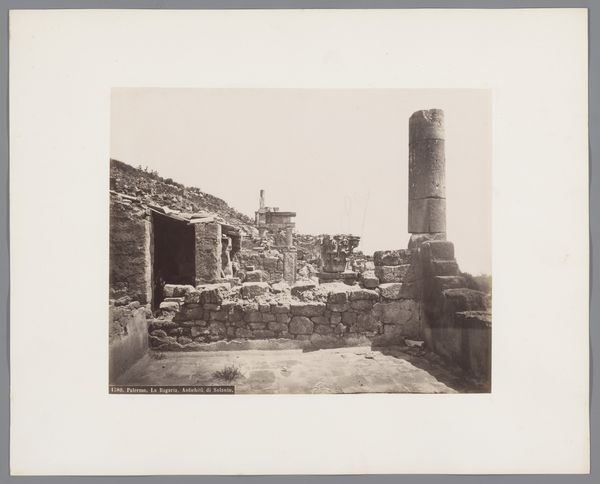
albumen-print, paper, photography, albumen-print, architecture
#
albumen-print
#
16_19th-century
#
landscape
#
paper
#
photography
#
ancient-mediterranean
#
cityscape
#
italian-renaissance
#
albumen-print
#
architecture
#
realism
Copyright: Public Domain
Giacomo Brogi made this albumen silver print of Pompeii's Strada dell'Abbondanza sometime in the 19th century. Photography in Italy at this time served to document the nation's rich past, but it also played a role in shaping national identity. The ruins of Pompeii, rediscovered in the 18th century, became powerful symbols for Italy, linking the present to the glory of the Roman Empire. Brogi's photograph presents an ordered, almost romantic view of the ancient street. The clarity of the image and the careful composition invite viewers to imagine the everyday life of Pompeii before its destruction. However, it is important to remember that Brogi's view is carefully constructed. He chose a specific viewpoint and used his technical skill to create a particular impression. Art historians rely on a variety of sources to understand images like these. By studying the history of photography, the culture of 19th-century Italy, and the archaeological discoveries at Pompeii, we can better understand the complex meanings embedded in this seemingly straightforward image.
Comments
No comments
Be the first to comment and join the conversation on the ultimate creative platform.
